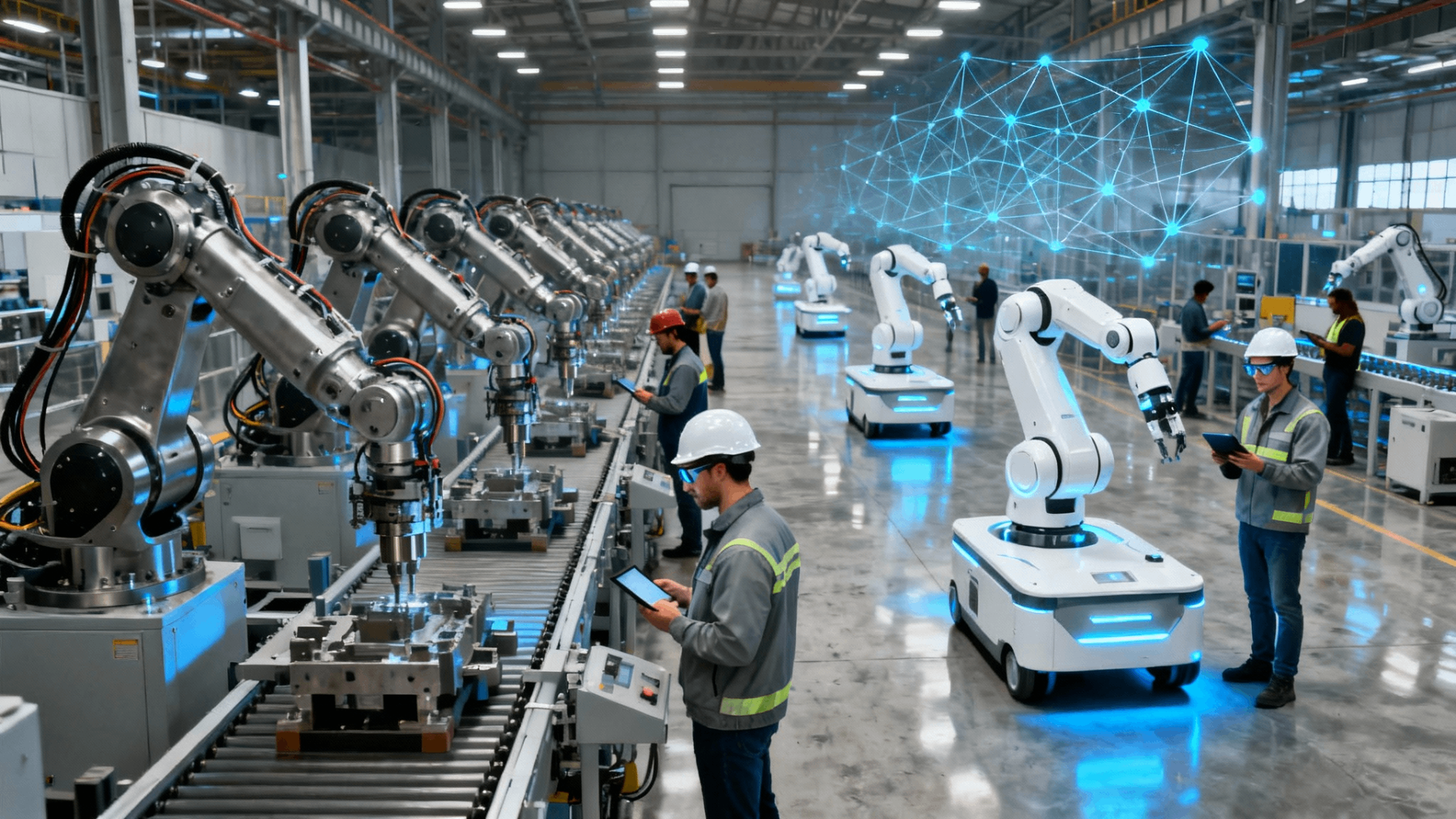The Problem: When Automation Hits Its Limits
For decades, automation has been the foundation of manufacturing success. Robots weld, conveyors move, and scheduling software plans production weeks in advance. This model has worked—until now.
Rigid automation, built on scripts and static rules, falters under today's pressures. When a machine breaks, the line halts. When a shipment is late, schedules collapse. When customer demands shift overnight, automation can't adapt without costly human reprogramming.
In North America, where labor costs are higher and reshoring is accelerating, these cracks widen. Traditional automation has taken factories far, but it is not enough to compete in a world of volatile supply chains, shorter lead times, and talent shortages.
The Context: North American Manufacturing Under Pressure
Manufacturers in North America face a dual challenge. On one hand, the strategic imperative is clear: shorten supply chains, bring production closer to customers, and reduce reliance on overseas suppliers. On the other hand, the economics are tough.
- Higher labor costs make domestic production expensive.
- Supply chain shocks (from pandemics to geopolitics) expose fragility.
- A retiring workforce leaves skill gaps that younger workers can't immediately fill.
Executives want resilience, but they also need competitiveness. Reshoring without efficiency gains risks driving costs too high. Doing nothing risks being left behind.
This is where Agentic AI enters—the bridge between reshoring ambitions and operational reality.
The Solution: Agentic AI Enables Autonomy
Agentic AI is not just smarter software. It represents a shift from automation that executes to autonomy that adapts.
Agents can reason, coordinate, and act on real-time data. They don't just follow instructions—they make decisions. On the factory floor, this means fewer stoppages, faster adjustments, and more efficient use of labor and energy.
The impact becomes clear when you compare the old way to the new way.
Example 1
The Old Way: Reactive Maintenance
Factories rely on fixed schedules or wait until equipment breaks. That means unnecessary service costs, unexpected downtime, and frustrated customers when orders are delayed.
The New Way: Predictive Autonomy
Agentic AI continuously monitors machines, predicts failures, orders parts, and schedules repairs before breakdowns occur. Lines run longer, workers spend less time firefighting, and delivery promises are kept.
Impact for Leaders: Reliability shifts from luck to certainty, unlocking more capacity without new capital investment.
Example 2
The Old Way: Manual Quality Checks
Quality control often depends on spot checks or outdated vision systems. Defects slip through, recalls damage reputation, and waste eats into margins.
The New Way: AI-Driven Precision
Computer-vision agents detect microscopic defects in real time and adjust machine parameters instantly. The system learns with every batch, improving accuracy over time.
Impact for Leaders: Quality becomes consistent, scrap costs drop, and customers receive products they can trust.
Example 3
The Old Way: Static Scheduling
Production schedules are locked in weeks ahead. A late supplier or a rush order can throw everything off, leading to overtime costs, missed deadlines, and unhappy clients.
The New Way: Dynamic Adaptation
Agentic AI agents reschedule production automatically, reorder materials, and rebalance workloads in real time. Disruptions are handled in minutes, not days.
Impact for Leaders: Agility becomes a competitive weapon, turning volatility into an advantage.
Why This Matters for Manufacturing Leaders
Agentic AI is not an abstract trend—it directly addresses the pressures executives face.
- Resilience: Factories can withstand supply chain shocks without stalling.
- Competitiveness: Higher domestic costs are offset by smarter, leaner operations.
- Sustainability: Energy optimization reduces costs and meets ESG targets.
- Workforce Leverage: AI copilots bridge skill gaps, empowering teams instead of replacing them.
- Innovation Speed: Products get to market faster, supported by flexible production.
The choice is no longer between cheap labor abroad or fragile automation at home. With Agentic AI, North American manufacturers can bring production back while gaining agility, reliability, and customer trust.
The Bottom Line: Competing in the Next Era of Manufacturing
Automation got manufacturing here, but autonomy will take it further. Agentic AI turns rigid, rule-bound systems into adaptive, intelligent operations.
For North American leaders, this is more than efficiency—it is the key to making reshoring viable, sustainable, and profitable.
At Bafmin, we help manufacturers cut through the hype and build practical AI strategies. From identifying use cases to piloting deployments, we focus on outcomes that strengthen resilience and competitiveness. If you're ready to see how autonomy can transform your factory, we're ready to guide the way.
